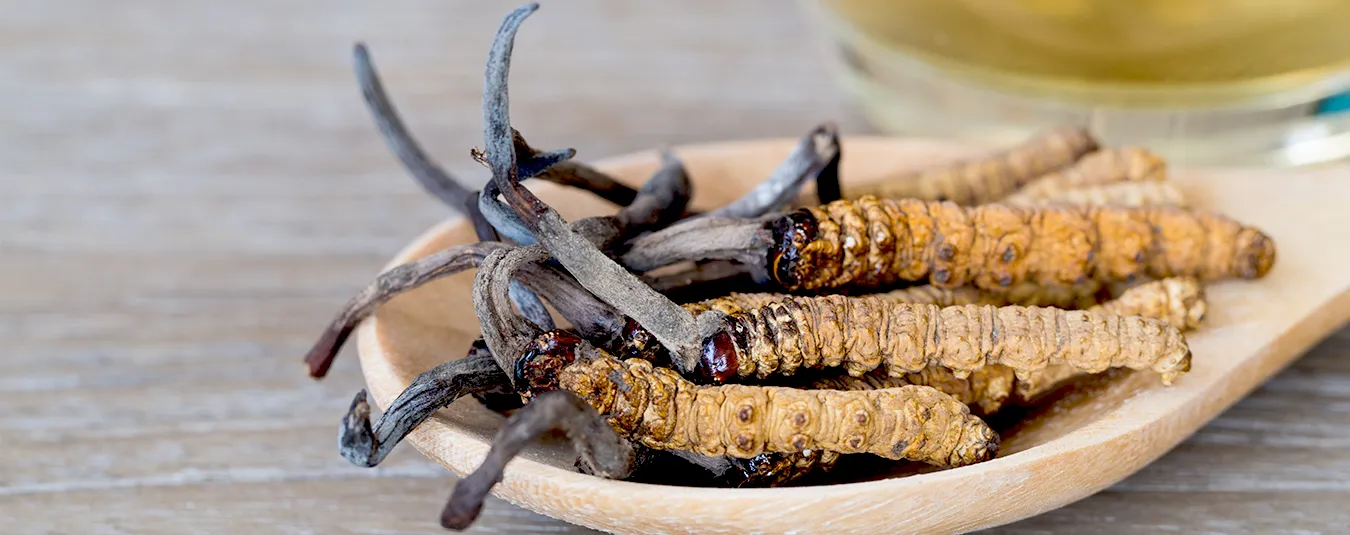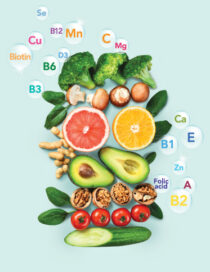A Treasured Fungus in Traditional Medicine
Cordyceps is one of the most treasured medicinal fungi in traditional Chinese medicine (TCM). Once reserved for emperors in Ancient China, it is still valued today for its powerful health-promoting and longevity-enhancing properties.
What is Cordyceps?
Known as a rare and precious fungus, cordyceps has been used for centuries to restore vitality, balance the body, and strengthen overall health. In Chinese, cordyceps is called dong chong xia cao, meaning “winter worm, summer grass.” Its unique life cycle begins when the fungus infects the larva of a caterpillar in summer. Over time, it fills the body, leaving a stiff “worm” in winter. By summer, a grass-like shoot grows from the head of the fungus.
Key Health Benefits of Cordyceps
a) Athletic performance
Cordyceps helps boost stamina and endurance. By increasing adenosine triphosphate (ATP), the body’s main energy molecule, it fights fatigue and supports physical strength.
b) Vitality and anti-ageing
Traditionally regarded as a life-strengthening tonic, cordyceps balances the vital force known as Qi. Its antioxidants help neutralise free radicals, slowing visible signs of ageing and supporting longevity.
c) Respiratory health
Cordyceps has long been used to strengthen the lungs. It enhances oxygen use in the body, making breathing more efficient. It may also ease conditions like asthma, chronic bronchitis, and chronic obstructive pulmonary disease (COPD).
d) Kidney health
In TCM, cordyceps is highly valued for supporting kidney function. Research suggests it may improve kidney performance and help manage complications related to chronic kidney disease (CKD).
e) Immune defence
Cordyceps contains polysaccharides that support a healthy immune response. It helps the body stay resilient against infections and illness.
f) Sexual health
Often called “Himalayan Viagra,” cordyceps is believed to enhance libido, improve virility, and support male fertility.
Wild vs Cultivated Cordyceps
Wild cordyceps is rare and available only in limited supply. Its quality can vary greatly, and it generally contains lower levels of active compounds compared to cultivated varieties. Since it grows naturally on caterpillars, it often includes remnants of the insect. In addition, wild cordyceps may be exposed to environmental toxins or heavy metals, which can affect safety and purity.
Cultivated cordyceps, on the other hand, is consistently available and offers stable quality. Thanks to modern biotechnology, it is produced with higher levels of active compounds, making it more effective. It is also caterpillar-free, ensuring it is suitable for vegetarians and vegans. Importantly, cultivated cordyceps is grown in controlled environments, keeping it free from toxins and heavy metals. Thanks to modern biotechnology, cultivated cordyceps is now widely available and accessible.
A Timeless Tonic
Cordyceps has travelled from the emperor’s palace to modern wellness shelves, valued for its role in boosting energy, strengthening immunity, and supporting long-term vitality. Whether cultivated or wild, this ancient herb continues to play a powerful role in health and longevity.














